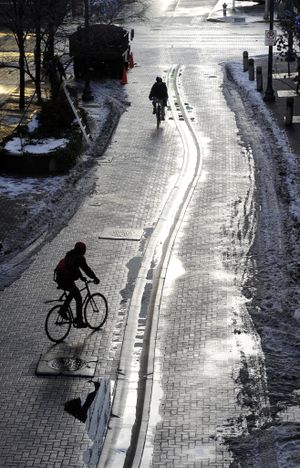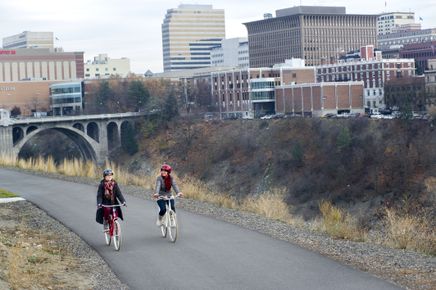Does Spokane have a woonerf?
Wall Street is the cobblestone street in downtown Spokane, where buses, pedestrians, a ton of Jimmy John's cyclists and delivery trucks peacefully co-exist.
There are very few signs telling people what to do in their respective transits, yet somehow the street is a pleasant place to walk, ride or drive.
It's because of this reason I'm going to start calling it a woonerf.
What's a woonerf (pronounced VONE-erf) you ask?
I'll let Eric Jaffe from CityLab explain:
A woonerf is a street or square where cars, pedestrians, cyclists, and other local residents travel together without traditional safety infrastructure to guide them. Also sometimes called a "shared street," a woonerf is generally free of traffic lights, stop signs, curbs, painted lines, and the like. The basic idea is that once these controls are stripped away, everyone is forced to become more alert and ultimately more cooperative. Through less restraint comes greater focus.
According to the New York Times, the Dutch came up with the woonerf (of course), and now 6,000 such "living streets" are in the Netherlands.
Despite such ubiquity there, and Spokane's woonerf-ish boulevard, conventional wisdom says to keep travel modes separate. In fact, keeping cyclists away from cars is now being promoted as the way to get more cyclists on the street. It just feels safer (and probably is). That's why Spokane will have a cycling greenway soon enough.
What do you think? Are woonerfs the way in Spokane? Or should the Dutch keep their woonerfs to themselves?

